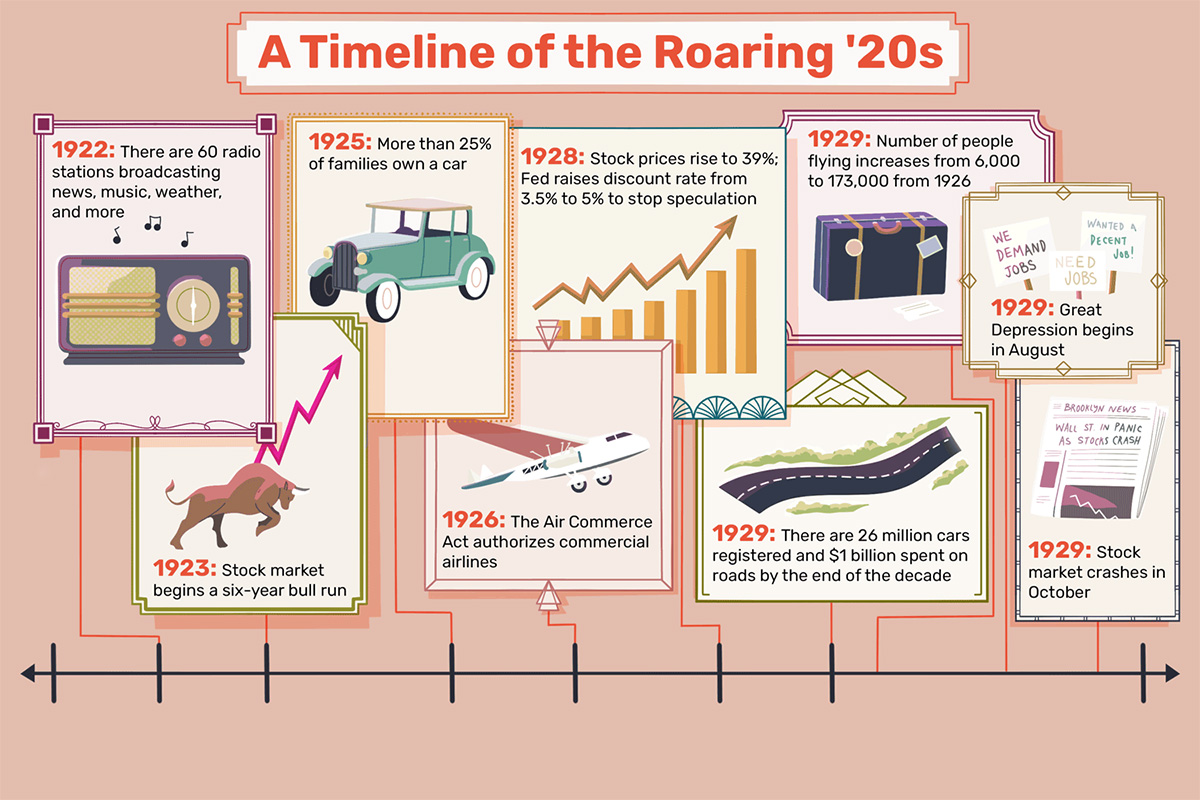

Finance
Why Are Bonds Lower In The Capital Structure
Modified: February 21, 2024
Learn why bonds are lower in the capital structure and how it impacts finance, from risk and return perspectives.
(Many of the links in this article redirect to a specific reviewed product. Your purchase of these products through affiliate links helps to generate commission for LiveWell, at no extra cost. Learn more)
Table of Contents
Introduction
Welcome to the world of finance, where the intricacies of capital structure and the impact it has on various financial instruments are constantly at play. One particular area of interest in this realm is the ranking of bonds within the capital structure. Understanding why bonds are placed lower in the capital structure requires a deeper dive into the fundamentals of capital structure and the factors that influence bond rankings.
Capital structure refers to the mix of different sources of financing a company utilizes to fund its operations and growth. This typically includes a combination of equity, debt, and sometimes hybrid securities. The capital structure not only determines the financial health and stability of a company but also plays a significant role in determining the risk and return profile of different securities within the capital structure.
Bonds, also known as fixed income securities, are a form of debt used by corporations and governments to raise capital. When investors purchase bonds, they are essentially lending money to the issuer in exchange for regular interest payments and the return of the principal at maturity. Bonds are considered as a key component of the capital structure due to their ability to provide long-term financing and their priority claim on the company’s assets in case of bankruptcy or liquidation.
However, it is important to note that bonds are typically ranked lower in the capital structure compared to other forms of financing, such as equity. This means that in the event of bankruptcy or liquidation, bondholders are paid after senior creditors and shareholders. This raises the question: why are bonds placed lower in the capital structure?
There are several factors that contribute to bond rankings within the capital structure, including market perception, the terms and conditions of the bond issuance, and the specific industry or sector in which the issuer operates. By understanding these factors, investors and analysts can make informed decisions and assess the relative risk and return potential of different bonds offered in the market.
In the following sections, we will delve deeper into the importance of capital structure and the factors that influence bond rankings. We will explore various aspects of bond placement in the capital structure, and the advantages and disadvantages associated with investing in bonds. By the end, you will have a clearer understanding of why bonds occupy a specific position within the capital structure and how this impacts their risk and return characteristics.
Definition of Capital Structure
Before diving into the specifics of bond rankings within the capital structure, it’s important to have a clear understanding of what capital structure entails. Capital structure refers to the combination of different sources of financing utilized by a company to fund its operations and investments.
Typically, capital structure encompasses three main components: debt, equity, and hybrid securities. Debt represents funds borrowed by the company, usually in the form of loans or bonds, which require the company to make regular interest payments and repay the principal amount within a specified period. Equity, on the other hand, refers to the ownership stake in the company held by shareholders, who have a residual claim on the company’s assets and earnings after all debts and obligations are paid. Hybrid securities, as the name suggests, are a combination of debt and equity, such as preferred shares or convertible bonds, which possess characteristics of both forms of financing.
The capital structure decisions of a company are influenced by factors such as its risk tolerance, cost of capital, financial flexibility, and the market conditions. Striking the right balance between debt and equity financing is crucial, as it directly impacts the company’s ability to generate returns and manage financial risks.
Capital structure plays a vital role in determining the financial health and stability of a company. A well-structured capital base can enhance the company’s creditworthiness, lower its cost of borrowing, and provide the necessary funds for expansion and growth. On the other hand, an excessively debt-heavy capital structure may increase the company’s financial risk and negatively impact its ability to meet its financial obligations.
By analyzing a company’s capital structure, investors and analysts can gain insights into its financial leverage, its ability to generate cash flows, and the level of risk associated with its securities. The capital structure of a company is often assessed through ratios such as the debt-to-equity ratio or the leverage ratio.
Understanding the dynamics of capital structure is crucial for evaluating individual securities within a company’s capital structure. It helps investors gauge the riskiness of a security and assess its position in the capital structure hierarchy.
Now that we have a clear definition of capital structure, let’s explore why bonds are typically ranked lower in the capital structure compared to other forms of financing, such as equity.
Importance of Capital Structure
The significance of capital structure lies in its ability to impact a company’s financial stability, risk profile, and cost of capital. Making informed decisions about capital structure is crucial for both companies and investors, as it can directly affect the value of the firm and the returns earned by shareholders.
One key aspect of capital structure is its influence on the risk and return trade-off. A well-balanced capital structure can help a company optimize its cost of capital, striking a balance between debt and equity financing. Debt financing typically has a lower cost compared to equity financing due to the tax-deductibility of interest payments. By utilizing debt, a company can take advantage of the tax shield provided by interest expense, leading to lower overall financing costs. However, excessive debt can increase financial risk and interest expenses, potentially impairing the company’s ability to meet its obligations.
Furthermore, the capital structure of a company affects its financial flexibility. Too much debt can restrict the company’s ability to invest in growth opportunities or withstand economic downturns. On the other hand, a higher equity component provides a buffer against financial distress and gives the company more flexibility in making strategic decisions.
Investors also pay close attention to a company’s capital structure when evaluating investment opportunities. The capital structure can provide insights into the company’s risk profile and its ability to generate returns. A highly leveraged company may be more susceptible to economic downturns and may have limited resources available for growth initiatives. On the other hand, a company with a strong balance sheet and a well-structured capital base may present a more attractive investment opportunity.
Additionally, understanding the capital structure of a company is essential for analyzing the position of different securities within the capital structure. This knowledge helps investors assess the risk and return potential of different securities, such as bonds. Bonds, being a form of debt, have a predetermined interest rate and maturity date, making them more predictable than equity investments.
Overall, having an optimal capital structure is crucial for a company’s long-term success and its ability to generate value for shareholders. Striking the right balance between debt and equity financing can enhance financial stability, reduce the cost of capital, and provide the necessary flexibility for future growth. Consequently, understanding the importance of capital structure and its impact on investment decisions is paramount for both companies and investors alike.
Understanding Bonds
Bonds are fixed income securities that represent a loan made by an investor to an issuer, typically a corporation or government entity. When investors purchase bonds, they are essentially lending money to the issuer in exchange for regular interest payments and the return of the principal amount at maturity.
Bonds are characterized by several key features:
- Face Value: This represents the principal amount of the bond, which is typically repaid to the investor at maturity.
- Interest Rate: The interest rate, also known as the coupon rate, determines the amount of interest payments the bondholder will receive at regular intervals throughout the bond’s term.
- Maturity Date: This indicates the date at which the issuer is obligated to repay the face value of the bond to the investor.
- Term: The term refers to the length of time until the bond matures. Bonds can have short-term (less than 1 year), medium-term (1 to 10 years), or long-term (greater than 10 years) maturities.
- Issuer: Bonds can be issued by governments, corporations, municipalities, or other entities seeking to raise capital.
Bonds play a crucial role in the financial markets as they provide a means for organizations to raise funds for various purposes, such as financing expansion projects, funding research and development, or meeting day-to-day operational expenses. For investors, bonds offer a relatively lower-risk investment option compared to stocks and other more volatile assets.
Bonds are typically considered fixed income securities because they provide a fixed stream of income in the form of periodic interest payments. This makes them an attractive option for investors seeking stable cash flow and income generation. The interest payments are usually made semi-annually or annually, depending on the terms of the bond.
While bonds are generally viewed as lower-risk investments compared to stocks, they are not entirely risk-free. The risk associated with bonds primarily stems from the creditworthiness of the issuer. Bondholders face the risk of default if the issuer is unable to make the interest payments or repay the principal amount at maturity.
Bondholders also face interest rate risk, meaning that the market value of their bonds can fluctuate in response to changes in prevailing interest rates. When interest rates rise, newly issued bonds tend to offer higher coupon rates, making existing bonds with lower coupon rates less appealing to investors. Consequently, the market value of existing bonds may decrease. On the other hand, when interest rates fall, the market value of existing bonds generally increases.
Overall, understanding the fundamental characteristics of bonds is essential for investors looking to diversify their portfolio and generate steady income. Bonds offer a predictable stream of income, a defined maturity date, and a range of investment options with varying levels of risk. By carefully considering the features and risks associated with bonds, investors can make informed decisions that align with their financial goals and risk tolerance.
Factors Affecting Bond Rankings in Capital Structure
When it comes to determining the ranking of bonds within the capital structure of a company, several factors come into play. These factors can influence the relative priority and level of risk associated with different bonds. Understanding these factors is crucial for investors and analysts in assessing the position and attractiveness of bonds within a company’s capital structure. Let’s explore some of the key factors:
- Seniority: Seniority refers to the hierarchy of claims in the event of bankruptcy or liquidation. Senior bonds, also known as secured bonds, have a higher priority claim over assets of the company compared to junior bonds or unsecured bonds. Senior bonds are typically backed by specific assets or collateral, providing an added layer of security for bondholders. This seniority gives senior bondholders a higher chance of recovering their investment in case of default, making them a more secure investment option.
- Collateral: A bond that is backed by specific assets, such as property or equipment, is considered secured and generally carries lower risk compared to unsecured bonds. The presence of collateral provides an additional layer of protection for bondholders in the event of default, as these assets can be sold to repay the bondholders.
- Debt-to-Equity Ratio: The debt-to-equity ratio measures the proportion of debt to equity in a company’s capital structure. A higher debt-to-equity ratio indicates a higher level of leverage and potentially greater financial risk. Bondholders typically assess a company’s debt-to-equity ratio to gauge the risk of default and the likelihood of repayment. Companies with lower debt-to-equity ratios are considered less risky, providing more favorable rankings for their bonds within the capital structure.
- Financial Performance: A company’s financial performance plays a crucial role in bond rankings. Bondholders assess key financial metrics such as revenue growth, profitability, cash flow generation, and debt serviceability to evaluate the likelihood of timely interest payments and repayment of principal. Companies with strong financial performance are more likely to receive higher bond rankings, reflecting their ability to meet their debt obligations.
- Industry and Sector: The industry or sector in which a company operates can also impact bond rankings. Industries with stable and predictable cash flows, such as utilities or consumer staples, generally have less risky bonds compared to industries with higher volatility and economic sensitivity, such as technology or hospitality. Bondholders consider the industry and sector dynamics to assess the risk profile of bonds and their position in the capital structure.
These are just a few of the many factors that influence bond rankings within the capital structure. It is important to note that each company’s capital structure is unique, and the specific factors impacting bond rankings may vary based on the issuer’s financial condition, industry dynamics, and market perception.
By analyzing these factors, bondholders and investors can gain insights into the relative risk and return of different bonds within a company’s capital structure. This information enables them to make informed investment decisions and diversify their bond portfolios in a way that aligns with their risk tolerance and financial objectives.
Market Perception and Bond Rankings
In addition to the fundamental factors discussed earlier, market perception plays a significant role in determining the rankings of bonds within the capital structure. Market perception refers to the collective opinions and expectations of investors and market participants regarding the creditworthiness and risk profile of a company’s bonds.
Market perception can significantly impact bond rankings for several reasons:
- Credit Ratings: Credit rating agencies, such as Standard & Poor’s, Moody’s, and Fitch, assess the creditworthiness of companies and assign ratings to their bonds. These ratings reflect the agencies’ evaluation of the issuer’s ability to meet its debt obligations. Higher credit ratings indicate lower perceived risk and are typically associated with higher bond rankings. Market perception heavily relies on these credit ratings when evaluating the relative safety and attractiveness of different bonds.
- Investor Sentiment: Investor sentiment, influenced by market conditions and economic factors, can impact the demand for certain types of bonds. During periods of economic uncertainty or market volatility, investors may seek safer investments, driving up demand for highly rated and less risky bonds. This increased demand can lead to higher bond rankings, as bond prices rise and yields decrease.
- Secondary Market Performance: The performance of bonds in the secondary market, where they are traded after the initial issuance, can influence market perception and rankings. If a bond trades at a premium in the secondary market, indicating high demand and confidence, it may receive a higher ranking. Conversely, if a bond trades at a discount or experiences price volatility, it may be viewed as riskier and receive a lower ranking.
- Market News and Events: News and events related to a company, industry, or the overall market can significantly impact market perception and bond rankings. Positive news such as strong earnings reports, strategic partnerships, or favorable industry trends can improve market perception, leading to higher bond rankings. Conversely, negative news such as regulatory issues, economic downturns, or adverse industry developments can diminish market perception and result in lower bond rankings.
It is important to note that market perception and bond rankings can change over time. As new information becomes available and market conditions evolve, investors reassess their views and adjust their rankings accordingly. This dynamic nature of market perception highlights the importance of staying informed and keeping a close eye on market trends and developments.
Market perception, alongside fundamental factors, guides investors in their decision-making process, allowing them to identify bonds with favorable risk and return profiles within a company’s capital structure. By considering both market perception and fundamental factors, investors can make more informed investment decisions and construct portfolios that align with their investment objectives and risk appetite.
Advantages and Disadvantages of Bonds in Capital Structure
Bonds serve as a crucial component of the capital structure for many companies. They offer distinct advantages and disadvantages to both issuers and investors. Understanding these pros and cons can help stakeholders make informed decisions when considering the use of bonds in the capital structure.
Advantages of Bonds:
- Fixed Income: Bonds provide investors with a predictable stream of income through regular interest payments. This makes them an attractive investment option for individuals seeking stable cash flow and income generation.
- Lower Volatility: Compared to equities, bonds tend to exhibit lower price volatility. This makes them a desirable choice for risk-averse investors aiming to preserve capital and mitigate market fluctuations.
- Prioritized Claims: In the event of bankruptcy or liquidation, bondholders have a higher priority claim over equity shareholders. This means that bondholders typically have a better chance of recovering their investment compared to shareholders.
- Flexibility in Maturity Options: Bonds can be issued with different maturity terms, allowing issuers to tailor their financing needs to specific timeframes. This flexibility enables companies to align their debt repayment obligations with their cash flow projections.
- Tax Advantages: The interest paid on many types of bonds is tax-deductible for issuers, providing a potential tax advantage that can lower the overall cost of borrowing for the company.
Disadvantages of Bonds:
- Fixed Obligations: The regular interest payments and eventual repayment of the principal amount create fixed obligations for issuers. This can be burdensome during periods of financial strain or economic downturns, as issuers are legally obligated to make interest payments even if they face cash flow challenges.
- Interest Rate Risk: Bond prices can be sensitive to changes in prevailing interest rates. When interest rates rise, existing bonds with lower coupon rates become less attractive to investors, potentially leading to a decrease in their market value. Conversely, when interest rates fall, bond prices tend to rise. This interest rate risk can impact the value and marketability of bonds.
- Credit Risk: Bonds carry the risk of default by the issuer, especially for lower-rated or unrated bonds. If the issuer is unable to make interest payments or repay the principal at maturity, bondholders may face significant financial losses.
- Restrictions on Capital Structure: The issuance of bonds often comes with certain covenants and restrictions on the company’s capital structure. These could include limitations on additional debt, dividend payments, or other financial decisions. These restrictions can limit the company’s flexibility in capital allocation and strategic initiatives.
- Market Fluctuations: Bond prices can be subject to market fluctuations, influenced by investor sentiment, economic conditions, and changes in credit ratings. This volatility can impact the market value of bonds and lead to potential capital losses for investors who sell their bonds before maturity.
It is important to note that the advantages and disadvantages of bonds can vary based on the specific circumstances of the issuer and the prevailing market conditions. Companies and investors must carefully assess these factors to make informed decisions regarding the use of bonds in the capital structure and their inclusion in investment portfolios.
Conclusion
In conclusion, understanding the placement of bonds within the capital structure is crucial for both companies and investors. Bonds play a significant role in financing operations, diversifying portfolios, and generating stable income. However, they are typically ranked lower in the capital structure compared to other forms of financing, such as equity.
We explored the importance of capital structure and its impact on the risk and return trade-off. Capital structure decisions are influenced by factors such as risk tolerance, cost of capital, financial flexibility, and market conditions. Striking the right balance between debt and equity financing is crucial for companies to optimize financial stability and growth.
Bonds, being fixed income securities, provide investors with predictable income through regular interest payments and return of principal at maturity. They are influenced by factors such as seniority, collateral, debt-to-equity ratio, financial performance, industry dynamics, market perception, and more. Understanding these factors allows stakeholders to assess the risk and return potential of different bonds within the capital structure.
Market perception, shaped by factors like credit ratings, investor sentiment, secondary market performance, and market news, plays a significant role in bond rankings. Investors and analysts rely on market perception alongside fundamental factors to evaluate the relative safety and attractiveness of bonds.
Bonds offer advantages such as fixed income, lower volatility compared to equities, prioritized claims in bankruptcy, flexibility in maturity options, and potential tax advantages. However, they come with disadvantages including fixed obligations, interest rate risk, credit risk, restrictions on capital structure, and market fluctuations.
In making investment decisions, both issuers and investors must carefully consider the advantages and disadvantages of bonds. Evaluating factors such as financial health, market conditions, risk appetite, and investment objectives helps them make informed choices that align with their goals.
Overall, bonds are an integral part of the capital structure, offering stable income to investors and financing options for companies. Appreciating their position within the hierarchy of capital structure and various influencing factors empowers stakeholders to navigate the bond market with confidence.














